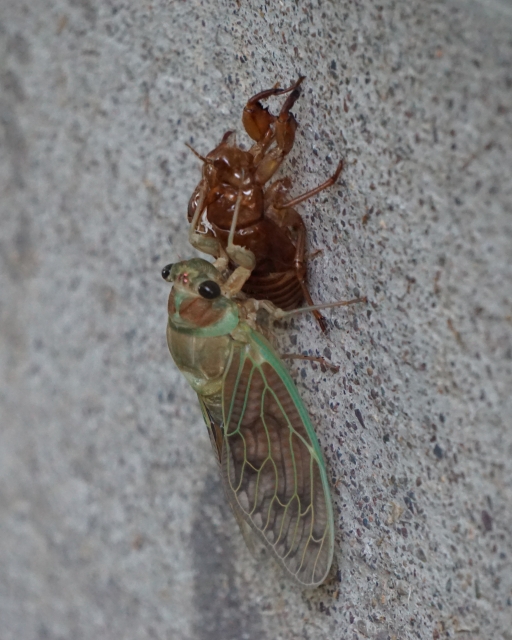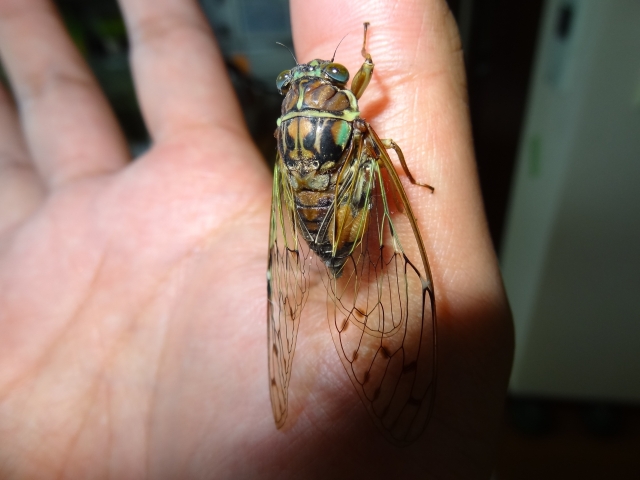Summer in Japan means essentially three things: heat, humidity and cicadas. There are about 3000 different species of cicadas worldwide, and Japan itself is home to around 30 species, which can be easily distinguished by their different songs.
The most common cicadas in Japan are the so-called abura semi which literally means “oily cicada”, since their song resembles the sound of frying oil (to the Japanese at least). Even though abura semi are among the largest cicadas here – they measure up to 40 mm – and you hear them everywhere in summer, they blend perfectly into the trees and are very hard to see.
The Japanese abura semi are a yearly species. They emerge in mid July as adults (imago) and from then on live, sing, and mate until late August to early September. Their larvae survive in the ground where they feed off tree roots until they emerge again in the next summer. This is when there are many empty shells left on low leafs and bushes, and it is easy to see that summer has started.
Cicadas don’t come alone, they sit in trees and bushes by the hundreds and sing together to attract females. Every species has its individual song, and they can be extremely loud. Some species can generate up to 120 dB, among the loudest of all sounds produced by insects, rivaling chain saws. And as cicadas can sing for hours, it can get very annoying over time, and it seems a bit unfair (although totally understandable from an evolutionary point of view) that males can disable their “ears” while singing to prevent hearing loss.
How the cicada’s song is produced is very interesting: Essentially it’s by training their muscles! Male cicadas have so-called tymbals (noisemakers) in their abdomens, and they click every time the internal muscles are flexed, and a second time upon relaxing them again. In addition, the abdomen of male cicadas is pretty much hollow, which amplifies each click. When many cicadas come together, these clicks blend together to a single soundscape where individual clicks or even a single insect are not distinguishable at all.
Another interesting tidbit about cicadas is that they cannot jump, but they do fly. They are not dangerous at all to humans, but when one of those large abura semi comes right at you with a deep buzz, it can be quite scary. Besides their perfect mimicry which makes them hard to see on the trees they sit on, they also practice “playing dead” when they are being disturbed. In the last weeks, I have nudged quite a few cicadas that were lying on their backs in front of my apartment, just to have them fly off again with some extra indignant clicks.
As mentioned above, cicadas are one of those beloved Japanese insects that are often used to denote a season in art. While the Japanese don’t eat them like the Chinese do, they are significant in Japanese culture. And although they may not make quite as pretty a motif for paintings as the grasshopper, cicadas have inspired many poets over the ages because they signify the shortness of existence.
The song of the cicadas leaves nothing visible from their near death.
Basho
